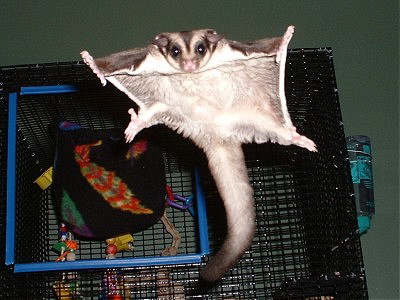
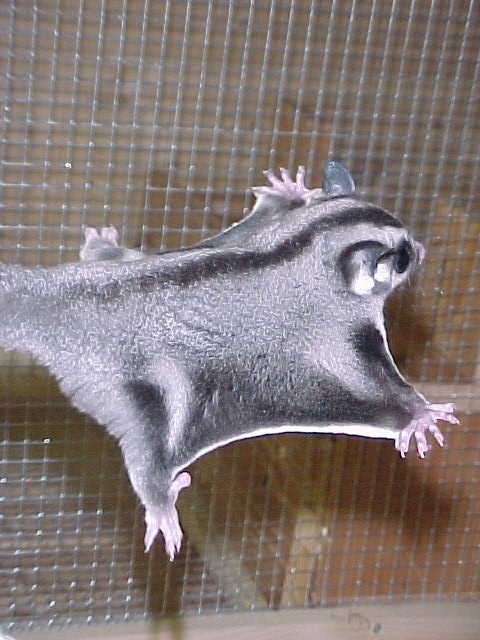
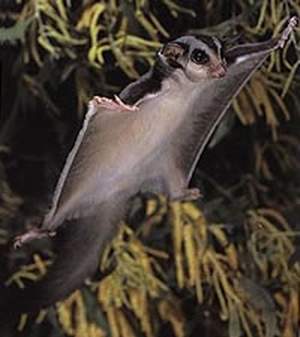
General:
The scientific name for the Sugar Glider is Petaurus breviceps. The Sugar Glider lives in Australia, Tasmania, Indonesia and Papua-new Guinea. Sugar-Glider live, above all, in woods and inhabit there tree caves. They prefer acacias and eucalyptus woods. One meets them, however, also in coconut plantations. It is important that they find old trees in her living space, because only they offer enough tree caves to to the small marsupials sleep and hide. Sugar-Glider live, above all, on tree juices, sweet fruit, flower pollen and nectar. Hence, they also have her name: " Sugar " is English and signified into German translated "sugar". However, they are no pure vegetarians, but look themselves also into insects and even small rodents. He can glide as a flight croissant with outstretched limbs up to 50 m. From the head a dark wide longitudinal strip stretches over the whole body, in addition, runs a stripe on the head sides of the nose over the eyes up to the ears. The big eyes - a tip to the fact are remarkable that the Sugar-Glider are nocturnal. They live almost exclusively on trees and go very seldom on the ground. Even in the aviary one sees them really seldom on the ground. Sugar glider mostly live in groups from up to 8 animals and a varying number of Jung's animals. They are very established and go away seldom more than 150 m from her nest. The Glider become 12 - 15 cm long and once again the same length arrives for the tail. The females reach a weight from approx. 115 gramme and the little men approx. 140 grammes. In the wild they will be 7 years old 5-, while it can reach as a home animal also till 16 years. One should consider the acquisition of a Sugar Gliders well.
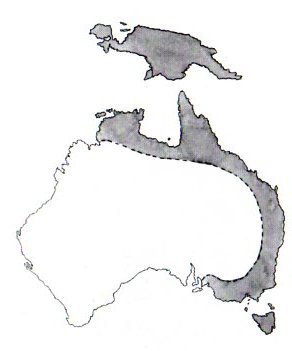
Relations of the Sugar-Gliders:
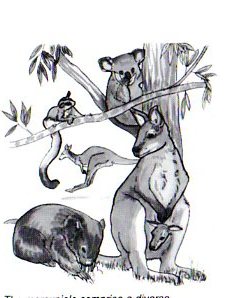
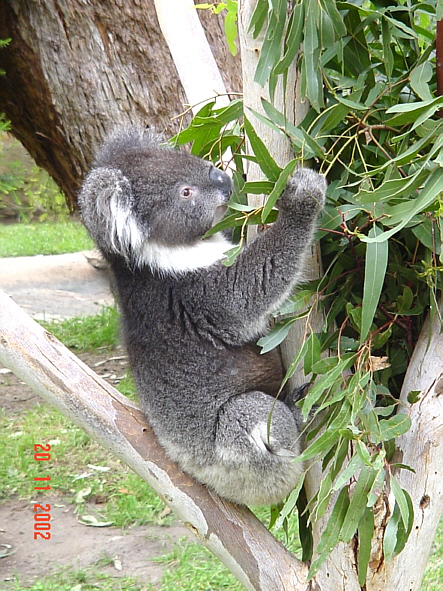
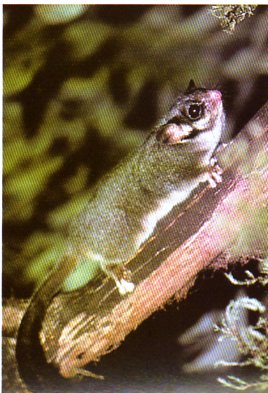
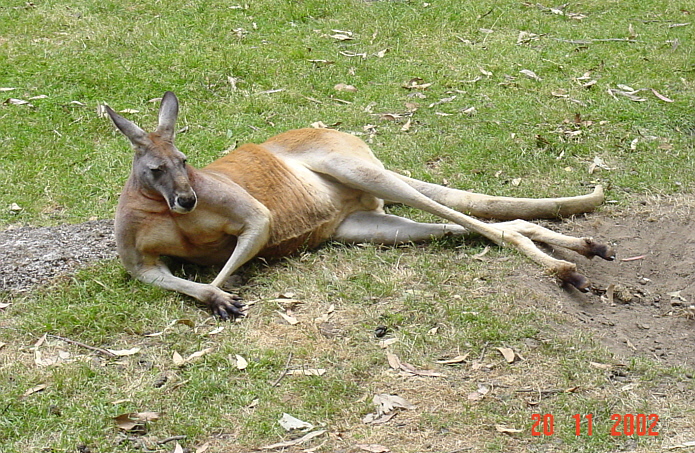
Sugar Glider as pet:
If one liked to hold Sugar Glider, one should be first about that in the clear that it concerns nocturnal animals. Only seldom one will note during the day somewhat of them, at night, nevertheless, they are very active. For children they are suitable less, it does not concern caress pets. The smell of the Sugar Glider is not everybody's thing and already quite a lot of Sugar Glider it was delivered after a short time again because it stank too much. There comes that Sugar Glider set down her urine and excrement simply and uncontrollably. Before you You decide Sugar Glider to purchase, you should follow the following things absolutely:
-
A Sugar Glider can become up to 16 years old. Are you ready to be there for a such long time daily for your Glider, to feed him, to give him exersice, to clean the cage thoroughly?
-
Sugar Glider are social animals, there should be at least 2 animals. A small group of 4 - to 5 animals would be better.
-
Do you have a friend who can expertly take care the animals in your absence?
-
Are the other animals in the household who become maybe dangerous for the Sugis? Do all members of the family agree with the acquisition?
-
Is there a veterinarian near you who knows a lot about the treatment?
-
Are you ready to accept the partly strong smell which originates by the marking?
-
Does space exist for a big cage? It should stand in a separate room, so that the Glider have during the day her rest.
-
Sugar Glider never become house broken, they defecate and urinate in the flat and in the cage.
-
They expect live feed 2 - 3 times weekly, like meal-worms and grasshoppers.
Food:
Sugar Glider are an omnivore, that is they live from herbal as well as from animal food. The food of "wild" Sugar-Glider exists primarily of fruit and insects, however, it is also already carried off small mammal or Jung's birds are eaten. As a keeper one should try to imitate, the natural food so well it goes of imitating or substitute. Therefore, the basic feed of the Glider should exist of fruit. Besides, sweet fruit kinds are unambiguously preferred. For the feeding of citrus fruits care is offered. Larger amounts can lead by the acid contained in them to failure.
Animal food should grow fat only 2 - 3 times per week are given, with it them not. Fruit mash and living feed should always be offered in its own feed bowls. Meal-worms and grasshoppers can be fed to the tame with tweezers. The hunt for jumping grasshoppers is a very much popular activity for all Sugis.
-
Daily amount of food:1 - 2 teaspoons of baby mash (4-th month) per animal
-
roll different of fruit kinds, chopped
-
animal feed 2 - 3 times per week
> cover live feed with mineral powder to cover the high calcium requirement
-
offer, in addition, always a salt lick block.
-
It is important to protect the optimum calcium care of the Glider. Therefore, the feed should be fortified least once per week with suitable preparations (e.g., calcium drop or feed lime).
-
Quickly one will recognise that the Gliders do not like all kind of feed immediately, the predilections also change over time. Glider are just real gourmets who wish possibly a lot of change on the menu. One should take into consideration these wishes as a keeper.
-
Water may never be absent and should always be offered in a separate dish any time. It is quite astonishing, what large amounts of water a Glider can take up.